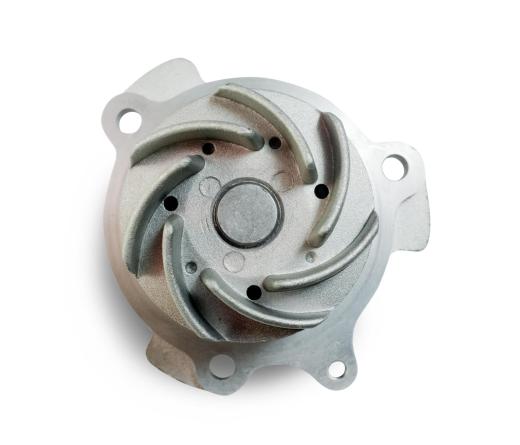A propeller pump is a high flow, low lift impeller type device featuring a linear flow path. The propeller pump may be installed in a vertical, horizontal, or angled orientation and typically has its motor situated above the water level with the impeller below water. These pumps function by drawing water up an outer casing and out of a discharge outlet via a propeller bladed impeller head. Propeller pumps are used in water treatment installations, chemical plants, or in agricultural applications where high head values are not required. When compared to other common pump designs, they feature several advantages such as large flow capacities, the ability to pump suspended sand, and prime-free operation.
Propeller pumps are of conventional rotary impeller design and are used in applications with large flow volume and moderate head requirements. In these cases, head refers to the total height to which the pump is capable of moving the water. These may be orientated vertically, horizontally, or be angled depending on the specific application. Vertical and angled propeller pumps typically feature a drive motor situated above the water at the top of a tubular casing. The pump drive shaft is routed down to the impeller head at the bottom of the casing through support bearings in a sealed inner tube.

The impeller head is equipped with propeller style blades and may consist of one or multiple stages. The suction head section of the casing which houses the impellers is typically fitted with a strainer attachment that prevents the ingestion of large foreign objects. When the pump operates, the rotating impeller draws water up the casing and through an angled discharge pipe. The fact that the water is moved in a straight line up the pump casing rather than in a circular direction represents the most distinct difference between propeller and other impeller pump types.
Horizontal propeller pump installations usually feature submerged, watertight motors mounted directly behind the impeller head. These models are typically employed where the pump is used to draw water through a reservoir wall or bulkhead. Free floating propeller pumps are mobile units mounted on a purpose built pontoon which can be moved around the body of water if the need arises. Angled pumps are often installed on reservoirs with steeply inclined walls.
The propeller pump is generally a shallow use pump with application depths seldom exceeding 100 feet (30 Meters) with typical shaft depths ranging from 10 to 30 feet (3 to 9 Meters). These pump types offer the benefit of high flow rates with larger examples capable of moving in excess of 50,000 gallons (190,000 liters) per minute. They don’t feature high head values; the average is between 20 and 40 feet (6 to 12 Meters). The propeller pump also has several distinct advantages over other pump types including high flow volumes, the ability to pump suspended silt, and a wide range of possible drive options. The fact that the impeller head is always submerged also means the pumps never have to be primed prior to use.
